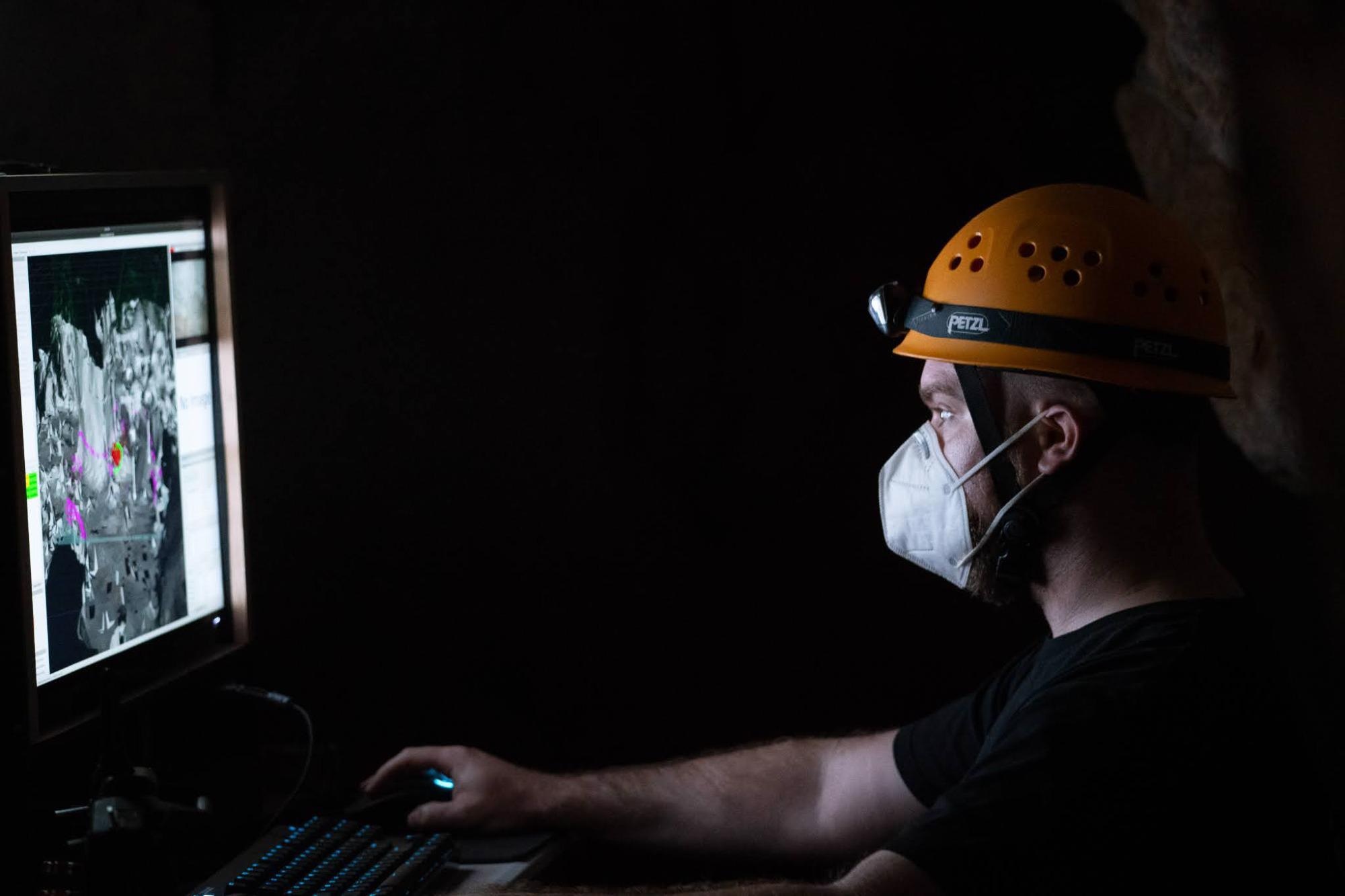Australia’s national science agency, CSIRO, will be part of reinventing the way humans and Artificial Intelligence work together, contributing to global efforts to design a completely new capability called ‘Collaborative Intelligence’.
 A human operator is providing mission goals and supervision to a team of robots during a DARPA Subterranean Challenge deployment inside a natural cave system. Image Credit: Katrina Lo Surdo
A human operator is providing mission goals and supervision to a team of robots during a DARPA Subterranean Challenge deployment inside a natural cave system. Image Credit: Katrina Lo Surdo
The newly launched $12 million Collaborative Intelligence (CINTEL) Future Science Platform aims to move beyond machines replacing people or automating their jobs, and instead to create teams that maximise the benefits of both human and machine intelligence.
One of CINTEL’s first projects will draw on the expertise of CSIRO’s Robotics and Autonomous Systems Group who recently claimed a silver medal in the international DARPA Subterranean Challenge. The challenge, which has been described as the ‘robot Olympics’, involved using teams of robots to explore and locate objects in unmapped underground environments under the supervision of a human operator.
CINTEL Leader Dr Cécile Paris said lessons from the challenge could help inform future human/robot teaming.
“The project will focus on developing a richer, dynamic human-robot collaboration, enabling humans and robots to respond in real time to changes in the environment and make better decisions, together,” Dr Paris said.
“CINTEL will research dynamic situation awareness and mechanisms to ensure a collaborative dialogue between humans and robots throughout, for example, a rescue mission.
“Rescue missions are often ill defined and dynamic, and the humans must use their own knowledge and skills, like reasoning, intuition, adaptation and experience, to identify what the robots should be doing. CINTEL will investigate how humans can fully utilise their unique skillset in collaboration with the robots for successful outcomes.”
Other early CINTEL projects include developing a digital team member to help scientists make sense of the massive amount of information in modern biological collections and supporting cybersecurity analysts with collaborative surveillance.
The program will be run by CSIRO in collaboration with research and impact partner Saber Astronautics, as well as Emesent, the Queensland AI Hub, TAFE Queensland, Aged Care Industry Technology Council, Global Community Resourcing, the Department of Defence, the Queensland University of Technology, and researchers from Monash University and the University of Sydney.
Dr Paris said CINTEL program’s goal is to leverage the fundamental differences between human and machine intelligence to ensure the best outcomes.
“We’re used to hearing about machines competing with humans in games like chess.
“But what isn’t as well known is that humans collaborating with AI have proven superior to both the best AI systems and human chess players.
“Human intelligence is creative and adaptable, while machine intelligence is more specific and able to handle vast amounts of data,” Dr Paris said.
“For many problems, particularly those that involve complex, changeable and difficult-to-define contexts, we are likely to get better results if we design AI systems explicitly to work with human partners, rather than attempting to do the job themselves.
"This requires a new way of thinking, both about how we design AI systems and how workers across different occupations and industries should work with them,” Dr Paris said.
Collaborative intelligence moves beyond the idea of machines replacing people or even just ‘keeping people in the loop’, aiming instead to unlock completely new capability by creating teams that maximise the benefits of both types of intelligence.
“This is the next scientific frontier of digital transformation,” Dr Paris said.
CINTEL will run for four years and will bring together behavioural and social scientists with computer, robotics and domain experts to develop the general-purpose technology needed to facilitate collaborative human/machine teams.
The program is part of CSIRO's Future Science Platforms portfolio, aimed at dedicating research to new and emerging opportunities for Australia.